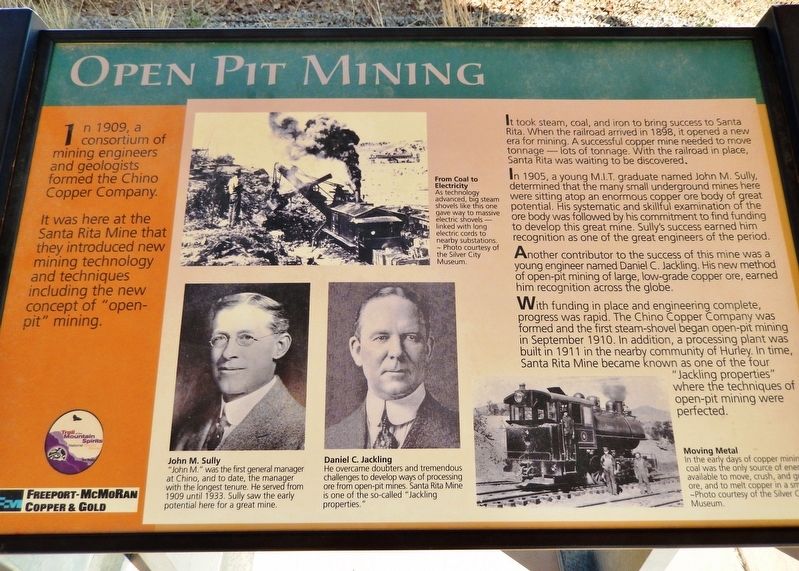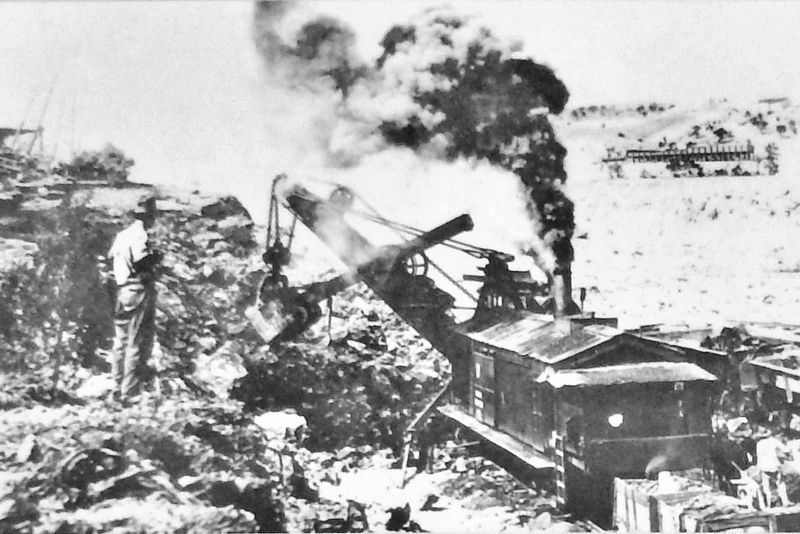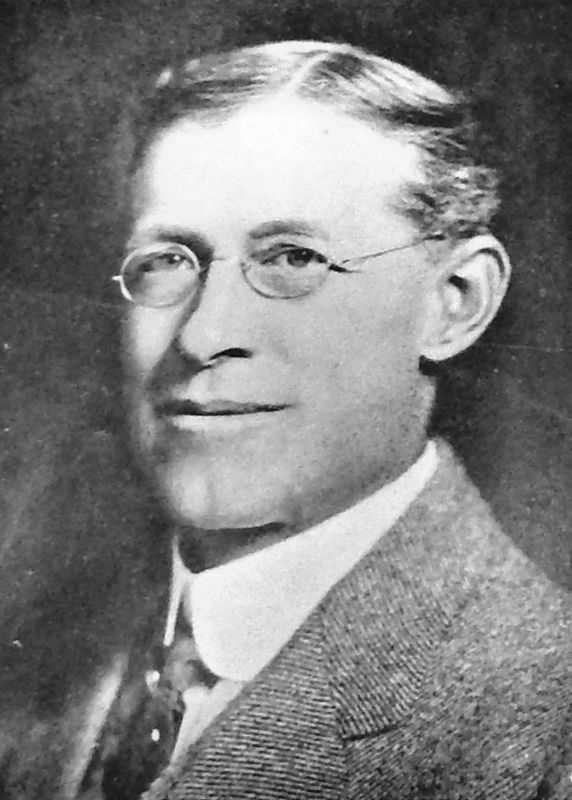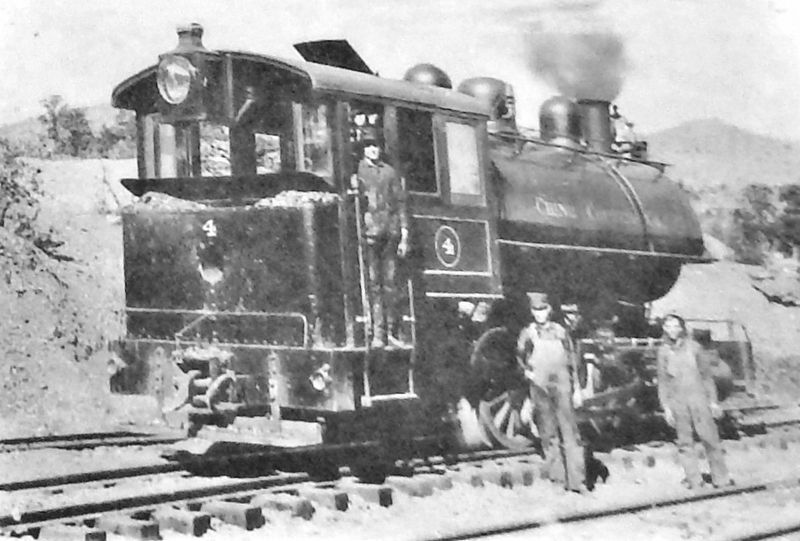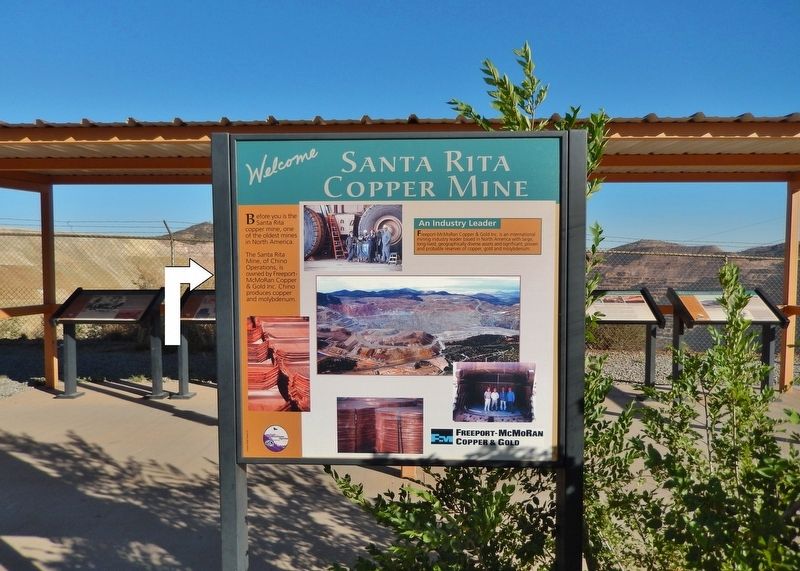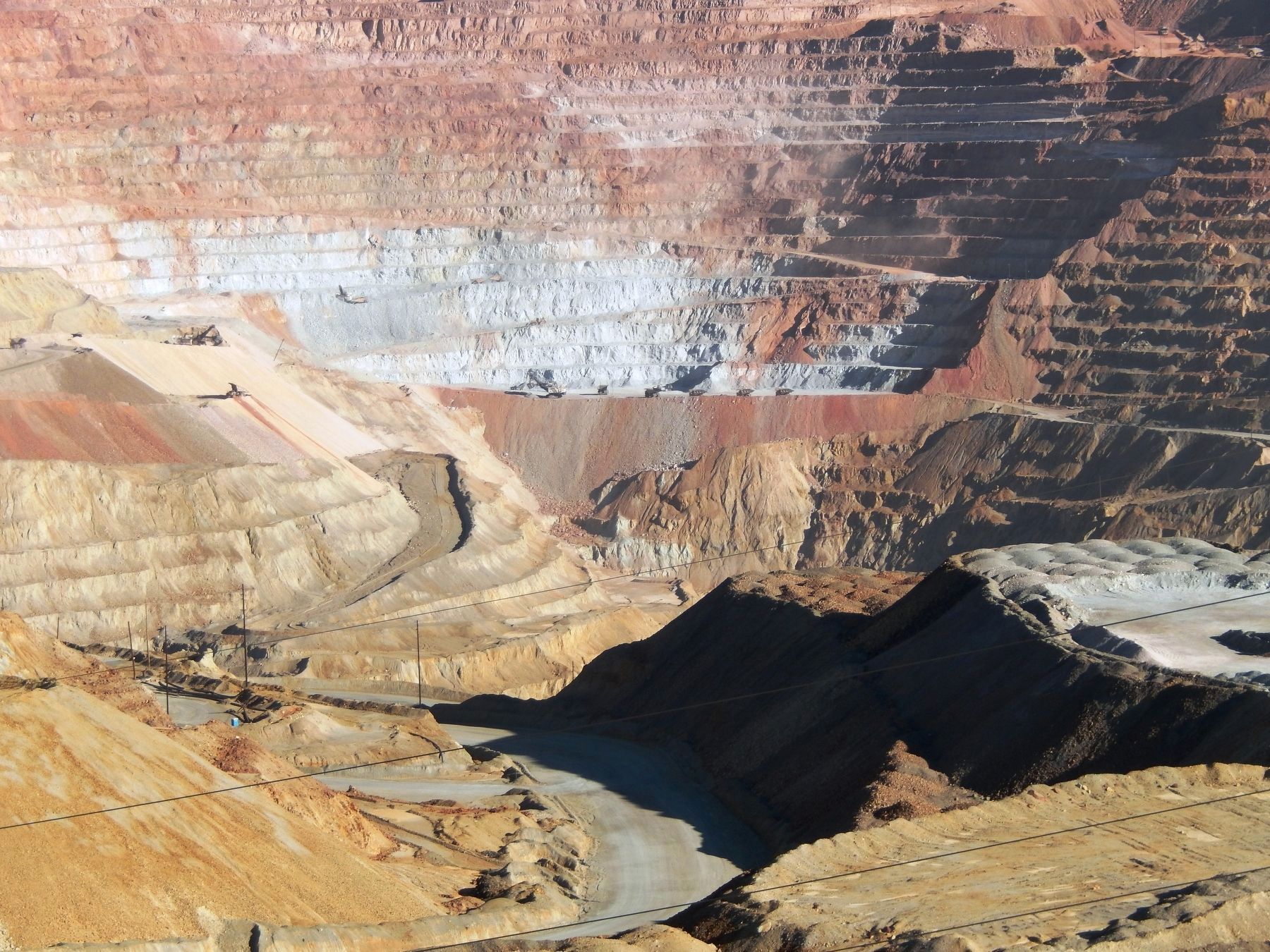Santa Rita in Grant County, New Mexico — The American Mountains (Southwest)
Open Pit Mining
Santa Rita Copper Mine
It was here at the Santa Rita Mine that they introduced new mining technology and techniques including the new concept of "open-pit" mining.
It took steam, coal, and iron to bring success to Santa Rita. When the railroad arrived in 1898, it opened a new era for mining. A successful copper mine needed to move tonnage — lots of tonnage. With the railroad in place, Santa Rita was waiting to be discovered.
In 1905, a young M.I.T. graduate named John M. Sully, determined that many small underground mines here were sitting atop an enormous copper ore body of great potential. His systematic and skillful examination of the ore body was followed by his commitment to find funding to develop this great mine. Sully’s success earned him recognition as one of the great engineers of the period.
Another contributor to the success of this mine was a young engineer named Daniel C. Jackling. His new method of open-pit mining of large, low-grade copper ore, earned him recognition across the globe.
With funding in place and engineering complete, progress was rapid. The Chino Copper Company was formed and the first steam-shovel began open-pit mining in September 1910. In addition, a processing plant was built in 1911 in the nearby community of Hurley. In time, Santa Rita Mine became known as one of the four “Jackling properties” where the techniques of open-pit mining were perfected.
Erected by Freeport-McMoRan Copper & Gold.
Topics. This historical marker is listed in these topic lists: Industry & Commerce • Railroads & Streetcars. A significant historical year for this entry is 1909.
Location. 32° 48.408′ N, 108° 4.394′ W. Marker is in Santa Rita, New Mexico, in Grant County. Marker is on Scenic State Road 152, 1.1 miles east of State Highway 356, on the right when traveling east. Marker is located at an interpretive exhibit overlooking the open pit mine site to the south. Touch for map. Marker is in this post office area: Hanover NM 88041, United States of America. Touch for directions.
Other nearby markers. At least 8 other markers are within 3 miles of this marker, measured as the crow flies. The Early Mining Years (here, next to this marker); The Companies & People (here, next to this marker); Santa Rita Copper Mine (here, next to this marker); The Discovery (here, next to this marker); Modern Mining & Processing (here, next to this marker); Reclaiming the Land (here, next to this marker); Kneeling Nun (approx. 2.8 miles away); Ladies Auxiliary of Local 890 (approx. 2.8 miles away). Touch for a list and map of all markers in Santa Rita.
Related markers. Click here for a list of markers that are related to this marker.
Santa Rita Copper Mine
Also see . . .
1. Open Pit Mining: A Breakthrough In Mineral Extraction. In 1909, the Chino Mine becomes the the first site for “open-pit” mining under the Chino Copper Company. The railroad arrives in Santa Rita* in 1898, allowing for massive amounts of copper to be transported. In 1905, John M. Sully determines that the many tunnel mines riddling the region are all accessing a single, massive copper body. (Submitted on October 16, 2020, by Cosmos Mariner of Cape Canaveral, Florida.)
2. Daniel Cowan Jackling. Daniel C. Jackling was a mining and metallurgical engineer who revolutionized the copper mining industry early in the 20th century by pioneering and developing the processing of low-grade porphyry copper ores. (Submitted on October 16, 2020, by Cosmos Mariner of Cape Canaveral, Florida.)
Credits. This page was last revised on October 16, 2020. It was originally submitted on October 14, 2020, by Cosmos Mariner of Cape Canaveral, Florida. This page has been viewed 812 times since then and 183 times this year. Photos: 1. submitted on October 14, 2020, by Cosmos Mariner of Cape Canaveral, Florida. 2, 3. submitted on October 15, 2020, by Cosmos Mariner of Cape Canaveral, Florida. 4, 5. submitted on October 16, 2020, by Cosmos Mariner of Cape Canaveral, Florida. 6. submitted on October 15, 2020, by Cosmos Mariner of Cape Canaveral, Florida. 7. submitted on October 16, 2020, by Cosmos Mariner of Cape Canaveral, Florida.
